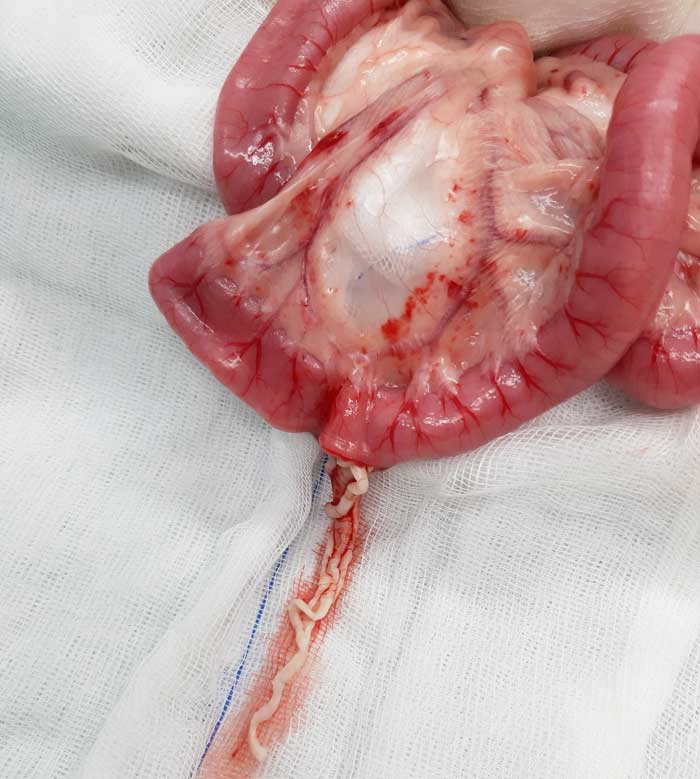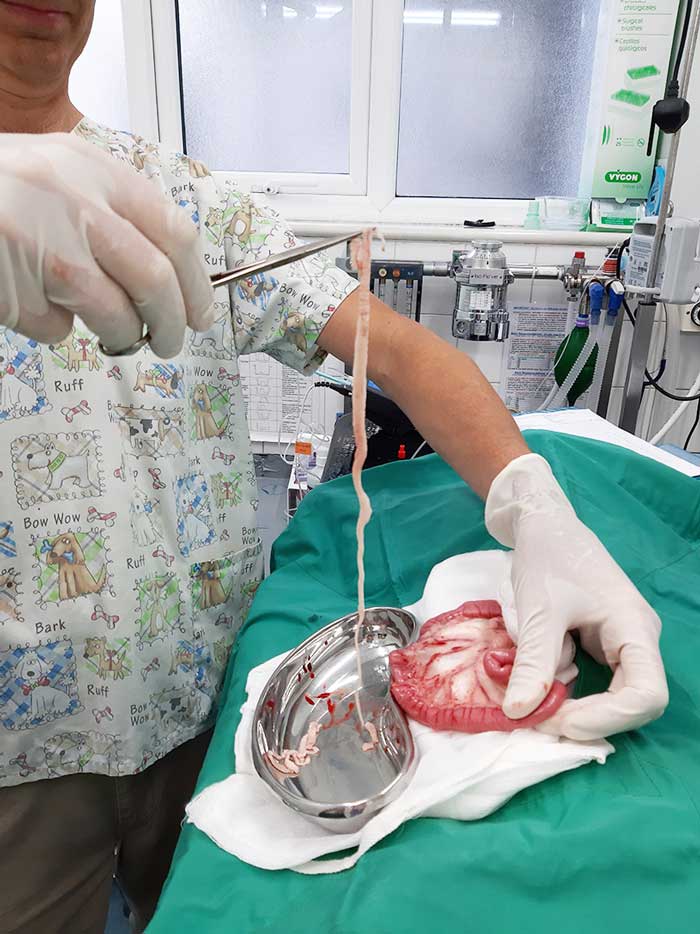17 Mar 2020
Tapeworm obstruction in a domestic shorthair
Ruth Wadsworth describes the unusual out-of-hours case of a six-year-old feline patient that presented vomiting blood.

While heavy burdens of tapeworms are known to be able to cause intestinal obstruction in kittens, it is very unusual to see this in a healthy adult cat.
Merlin – a six-year-old, 5kg, male, neutered domestic shorthair cat – was seen as an emergency at an out-of-hours service provider, vomiting blood. He was also anorexic and had a painful abdomen.
Minimum database bloods showed the cat was dehydrated and an ultrasound focused assessment with sonography for trauma scan was unremarkable. Funds were restricted, so he was given a maropitant injection, a drip and several methadone injections overnight before being transferred to his usual practice – Priory Lodge Veterinary Group in Tonbridge, Kent – the next morning.
Blood tests showed a marked neutropenia, eosinopenia and monocytosis. Total protein and albumin were low, and a feline pancreas-specific lipase test for pancreatitis was normal. Merlin was still refusing food and was very quiet.
Exploratory laparotomy
After a discussion with his owner, vet Dirk Brink decided to perform an exploratory laparotomy. A firm, localised, approximately 20cm long thickening consistent with a cloth foreign body was found in a section of the jejunum.
Enterotomy revealed the blockage was due to an impacted mass of large tapeworms. The majority were removed by gentle traction and a milbemycin tablet was given on recovery to eliminate the rest.


Aftermath
The next day Merlin was much brighter and started eating. He made a full recovery.
Merlin’s owner is a conscientious client who brought Merlin in every year for his vaccinations and parasite treatment. He has the correct dose of milbemycin administered by the vet at vaccination and is given another tablet six months later at home.
Flea control had been with flumethrin and imidacloprid collars for the past few years, and he was wearing an up-to-date three-month-old flumethrin and imidacloprid collar at the time of the operation.
We had advised Merlin’s owner in the past to worm every three months as he is an avid hunter and regularly eats his prey, but his owner continued to worm him every six months. His last worm treatment was in May 2019.
Conclusion
Tapeworms should not be dismissed as a differential diagnosis for vomiting and intestinal obstruction. We should be more proactive about advising owners of cats that hunt to worm them every three months rather than twice a year.
However, to put this in perspective, this is the first case we have seen in this practice.
